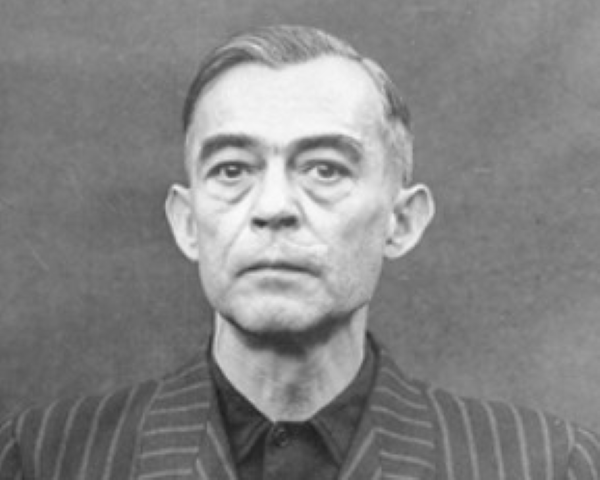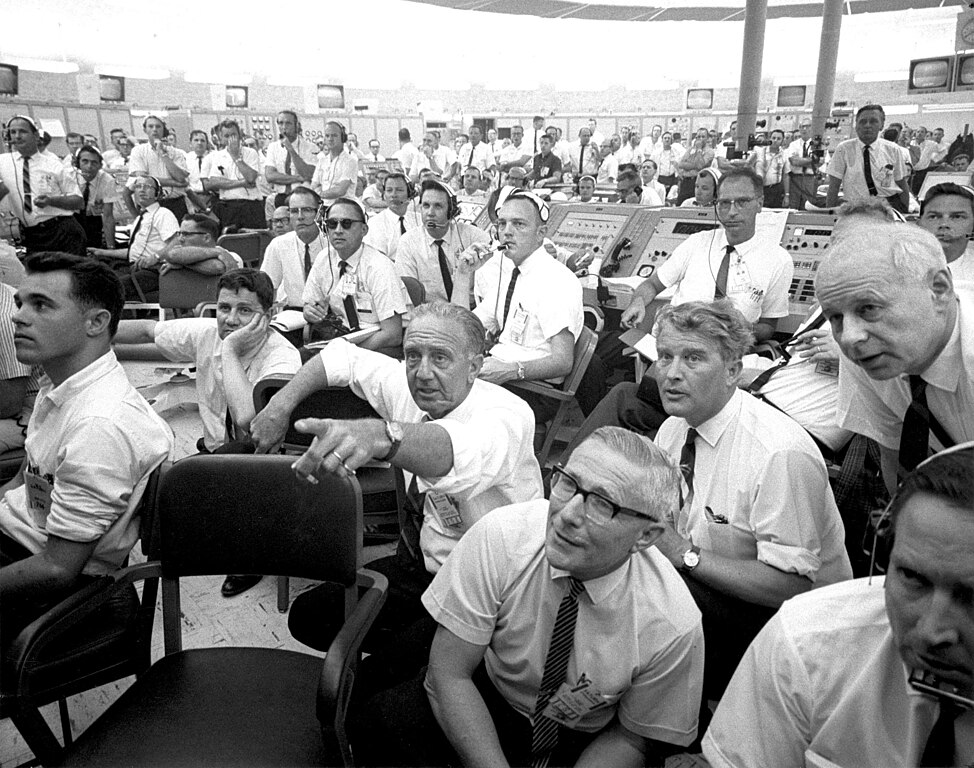
Chandigarh: Ever wondered what force multipliers the US has employed to become the foremost atmanirbhar arms producer in quality and quantity, accounting presently for around 43% of all global materiel exports, besides emerging as the world’s most advanced space power after WW2?
Online research has unearthed an answer that is not only shameful and long-forgotten eight decades after the War ended, but ignominiously discomfiting.
It revealed that the US successfully achieved both affiliated goals of primacy in materiel development and manufacture and pre-eminence in space exploitation, largely through the instrumental involvement of some 1,600 top Nazi military scientists, engineers, technicians and medical specialists that Washington recruited from 1945 onwards, as one of its numerous, but controversial recompenses after the War.
Despite being aware of their abhorrent crimes under Hitler, the US War Department’s newly created Joint Intelligence Objectives Agency or JIOA, shortlisted these expert Nazis in July 1945 under the highly classified Operation Paperclip to induct them into its military-industrial complex, attendant space and chemical weapons programmes and other sundry related projects, to boost them all.
Paperclip was so named after officers from the JIOA, created specially to recruit these specialist Nazis and eventually disbanded in 1962, attached paperclips to the files of the German scientists and technicians they wanted to recruit to indicate their prominence, problematic past under the Third Reich, or worse, suspicions of them having committed war crimes.
Assisted by the army’s Counter Intelligence Corps – dispersed in 1961 – and the Office of Strategic Services or OSS – later the CIA – JIOA personnel also employed paperclips to attach ‘sanitised’ cover sheets over the original backgrounds of some of these questionable Nazi scientists and experts, mitigating their crimes.
In many instances, these paper-clipped sheets re-classified them either as ‘non-Nazis’ or ‘nominal Nazis’ who had merely ‘gone along’ with Hitler to survive.
Jointly these military agencies ‘whitewashed’ the membership of many of these selected scientists, weapon designers and medical specialists of the dreaded Nazi SS (Schutzstaffel), responsible for the Holocaust, operating death and concentration camps and perpetuating other pernicious crimes like performing inhuman medical experiments upon prisoners.
These skilled Nazis were provided fake certificates by US authorities stating that they had been fully vetted and found innocent. A cross-section of accounts also state that US military agencies reportedly transferred some of these key figures to secret locations immediately after the War to prevent them from being questioned and subsequently tried for war crimes at Nuremberg in 1945-46.

Hired by the US Army Chemical Corps in 1951, Kurt Blome ran Germany’s biological warfare and chemical weapons projects during the War and experimented on prisoners in concentration camps. Photo: USHMM via Hedwig Wachenheimer Epstein/Wikimedia Commons. Public domain.
In retrospect, Paperclip has gainfully served the US over the succeeding decades, not only in boosting its technological military superiority but furthermore, over the ensuing decades, in furthering overseas arms sales worth trillions of dollars.
It’s a supremacy, built on dubious credentials but one guaranteed to dominate the arms bazaar for decades.
For years, the US’s underlying justification for Paperclip, launched weeks after Germany’s surrender which, almost all its allies at the time endorsed, was that Washington wanted to secure a strategic technological edge over the Soviet Union in the emerging Cold War by employing these tainted Nazis.
This standpoint was further rationalised in global military, political and diplomatic circles by the NKVD, the Soviet Union’s secret police, forcibly relocating over 2,200 German scientists and engineers and their families to the USSR overnight in 1946 via Operation Osoaviakhim, an acronym for the Union of Societies of Assistance to Defence and Aviation-Chemical Construction.
These Nazi mavens, many of whom were later repatriated by Moscow to Communist East Germany, were dragooned to further Moscow’s ballistic missile, aviation and nuclear and chemical weapon programmes, and also helped develop the early MiG-series combat aircraft.
Meanwhile, domestic legal and ethical concerns at the time, albeit limited, over Washington luring these former Nazis to work for it, were managed successfully by the US administration and the military-security agencies involved, largely via duplicity, half-truths, media control and re-locating the German specialists to out-of-the-way towns and universities across the country.
Some of these included Kurt Blome, who ran Germany’s biological warfare and chemical weapons projects during the War and experimented on prisoners in concentration camps at Dachau and Auschwitz, testing plague, anthrax and nerve agents on them.
He was also associated with Josef Mengele – known as the ‘Angel of Death’ – the head physician at the Auschwitz concentration camp who conducted inhumane medical experiments on prisoners, especially children and twins.
It is widely believed that US intervention saved Blome from conviction at Nuremberg in exchange for information about biological warfare, nerve gas and sundry chemical and biological weapons programs run from locations like Fort Detrick in Maryland.

Kurt Debus (with hand raised) and Wernher von Braun (seated to Debus’s right) at the Kennedy Space Centre. Photo: NASA/Wikimedia Commons. Public domain.
Declassified CIA documents, according to some accounts, confirm he was safeguarded and his experiences exploited by the US despite his war crimes.
In 1951, Blome was hired by the US Army Chemical Corps under Project 63, one of the successors of Paperclip, to work on chemical warfare. Thereafter, after his past activities began surfacing, he was quietly sent back to West Germany by the US, where he conducted pharmaceutical and chemical research for Western Intelligence agencies and died in 1969 without ever being punished for his ghastly crimes.
Included amongst other Nazis the US eagerly recruited was the high-profile Wernher von Braun who, during WW2, had worked on the V-2 rocket programme at the Peenemunde Army Research Centre on the Baltic coast in northeast Germany which, in reality, was the world’s first long-range guided ballistic missile.
In the US, he became director of NASA’s Marshall Space Flight Centre and a key figure in developing the Saturn V rocket that propelled Americans to the moon and, in turn, helped develop the Skylab space station.
More importantly, Braun – who died in 1977 – and his team worked on the US’s intermediate-range ballistic missiles project, which paved the way for its first set of nuclear-armed intercontinental ballistic missiles or ICBMs in the late 1950s, like the Pershing’s.
Kurt Debus, another scientist transported to the US, was a senior member of Heinrich Himmler’s SS and became the first director of NASA’s Launch Operations Centre – renamed later as the Kennedy Space Centre. He conducted 150 launches of military missiles and space vehicles, including 13 launches of the Saturn V as part of the Apollo Moon landing program.
Debus died in 1983 but worked alongside fellow Nazi physiologist and medical researcher Hubertus Strughold, better known in the US today as the ‘father of space medicine’ and one who spearheaded research on the effects of zero gravity on humans.
He also developed insights for high-altitude flight and astronaut endurance from skills he had developed whilst conducting such experiments on prisoners in the SS-operated Dachau concentration camp, Nazi Germany’s first such facility and the model for the rest that followed.
Some of Strughold’s subjects were exposed to low-pressure chambers to simulate high-altitude conditions, leading to severe suffering and death. Camp inmates, mostly Polish and Soviet POWs, were locked inside portable pressure chambers built by the Luftwaffe – the German air force – in which the interior air pressure could be altered to simulate the effects of freefalling from a high altitude without oxygen.

Strughold’s deadly experiments took place at the Dachau concentration camp, Nazi Germany’s first such facility and the model for the rest that followed. Photo: Rennett Stowe/Wikimedia Commons (via Flickr). CC BY 2.0.
Of the 200 test subjects employed in Strughold’s experiments, 80 were killed outright during these tests, and the remainder were subsequently executed by the SS.
After his death, Strughold’s alleged connection to the Dachau experiments became more widely known, following the release of US army intelligence documents from 1945 that listed him among those being sought as war criminals.
These revelations damaged his reputation and led to the revocation of various honours that had been bestowed upon him, and in 1995 following protests, the Hubertus Strughold Aeromedical Library at the Brooks Air Force Base in Texas was renamed. However, his portrait is still believed to be hanging there.
For many years, the US public was largely unaware of Operation Paperclip as the programme was highly classified, but by the 1970s, details began emerging gradually and some journalists and historians launched investigations into it.
Books like The Rocket and the Reich by Michael J. Neufeld shed light on the Nazi backgrounds of key figures like Braun and in 1985, Linda Hunt’s book Secret Agenda revealed documents showing how the US government knowingly recruited war criminals, which prompted a strong moral backlash, especially from Jewish organisations, given the horrific nature of Nazi war crimes.
Some Holocaust survivor groups and human rights organisations also condemned the US government for prioritising military advancements over justice. Critics argued that employing war criminals contradicted America’s stance against Nazi atrocities and raised questions about accountability.
But votaries of Paperclip countered by claiming, as always, that national security concerns outweighed ethical considerations due to the imminent threat posed by the Soviet Union and the resultant technological gains, especially in rocket science and space exploration, were critical to maintaining US military superiority.
Ironically, a diluted form of Paperclip ensued after the collapse of the Soviet Union in 1991 and many skilled Soviet scientists – especially those involved in developing nuclear weapons, missile technology, aerospace and biotechnology – were overnight rendered jobless.
Several countries, especially the US, took advantage of this situation and recruited these Soviets for their strategic programs, rather than let them sell their military expertise to countries like Iran, North Korea and China.
The reasoning, it seemed, was uncomplicated: if you cannot neutralise them, recruit them.
But this time round, the US adopted a less contentious approach than Paperclip and established the International Science and Technology Center in 1992, offering Soviet scientists jobs to employ them ostensibly on civilian projects.
But in this shady world of hi-tech, intrigue and finance, an unknown number of Soviet aerospace and nuclear experts were reportedly secretly hired by NASA, the government-run Defence Advanced Research Projects Agency, responsible for developing emerging technologies for military use and national security and private firms to further space and defence technology.
Moreover, Paperclip provided the US with a learning experience.
In conclusion, history shows that powerful nations recruit or ‘flip’ their enemies’ best talent rather than destroy it, prioritising exploitation and power over morality.
Instead of wiping out an enemy’s knowledge, absorbing it ensures controlling the strategic narrative to one’s advantage.




